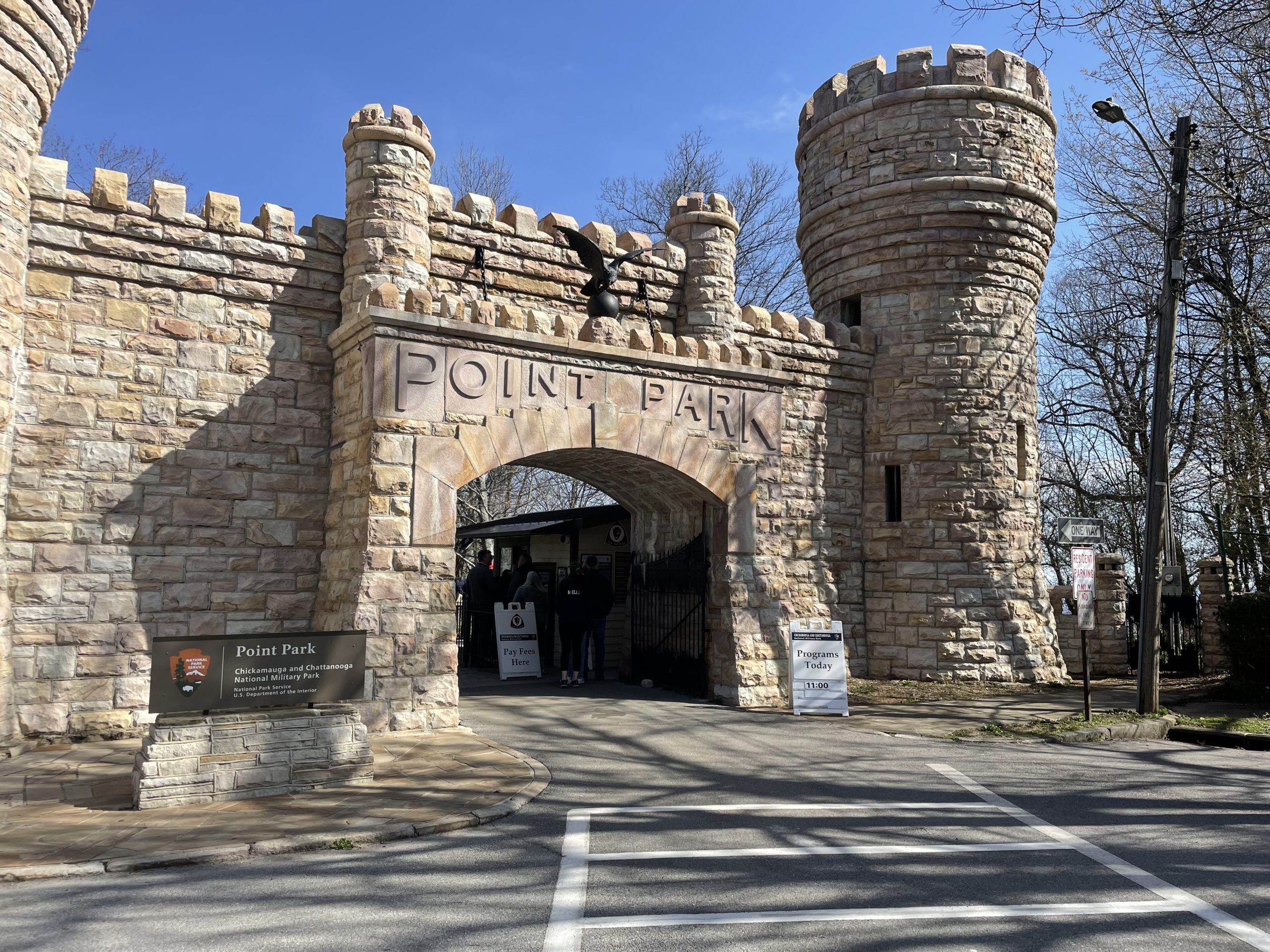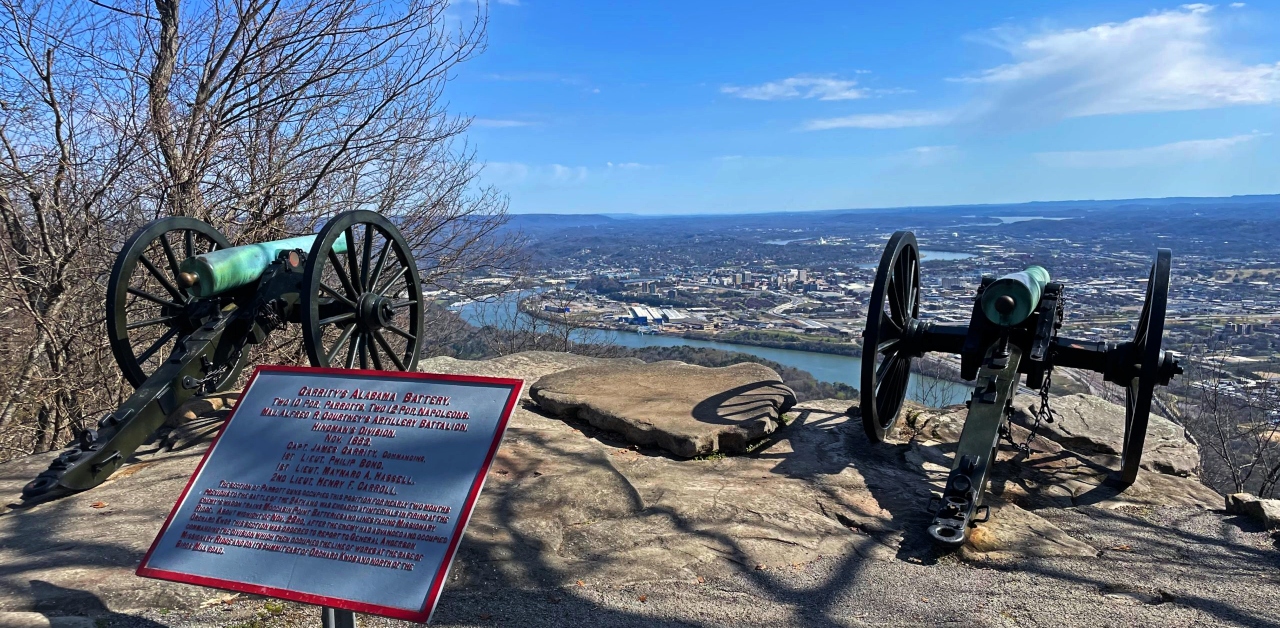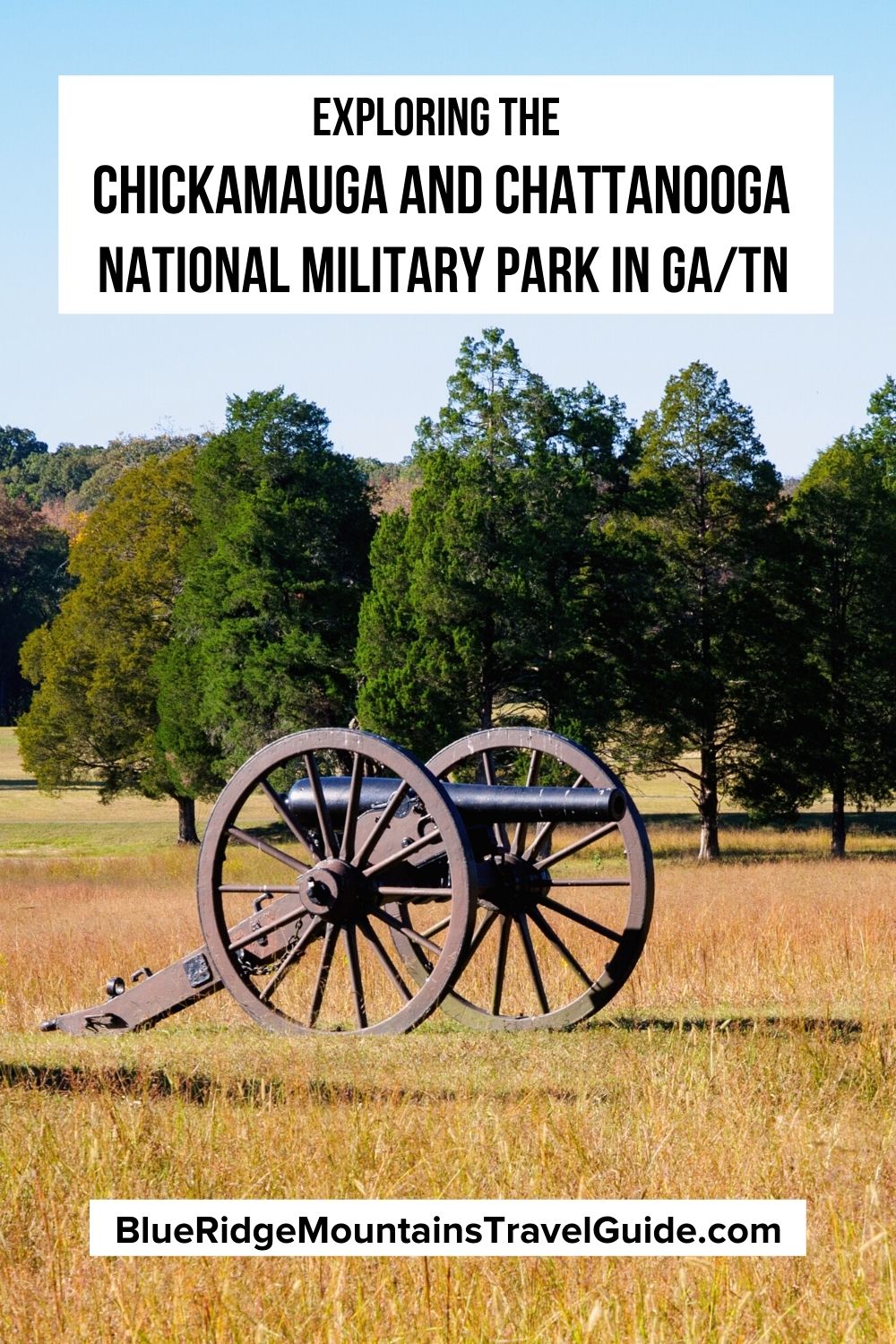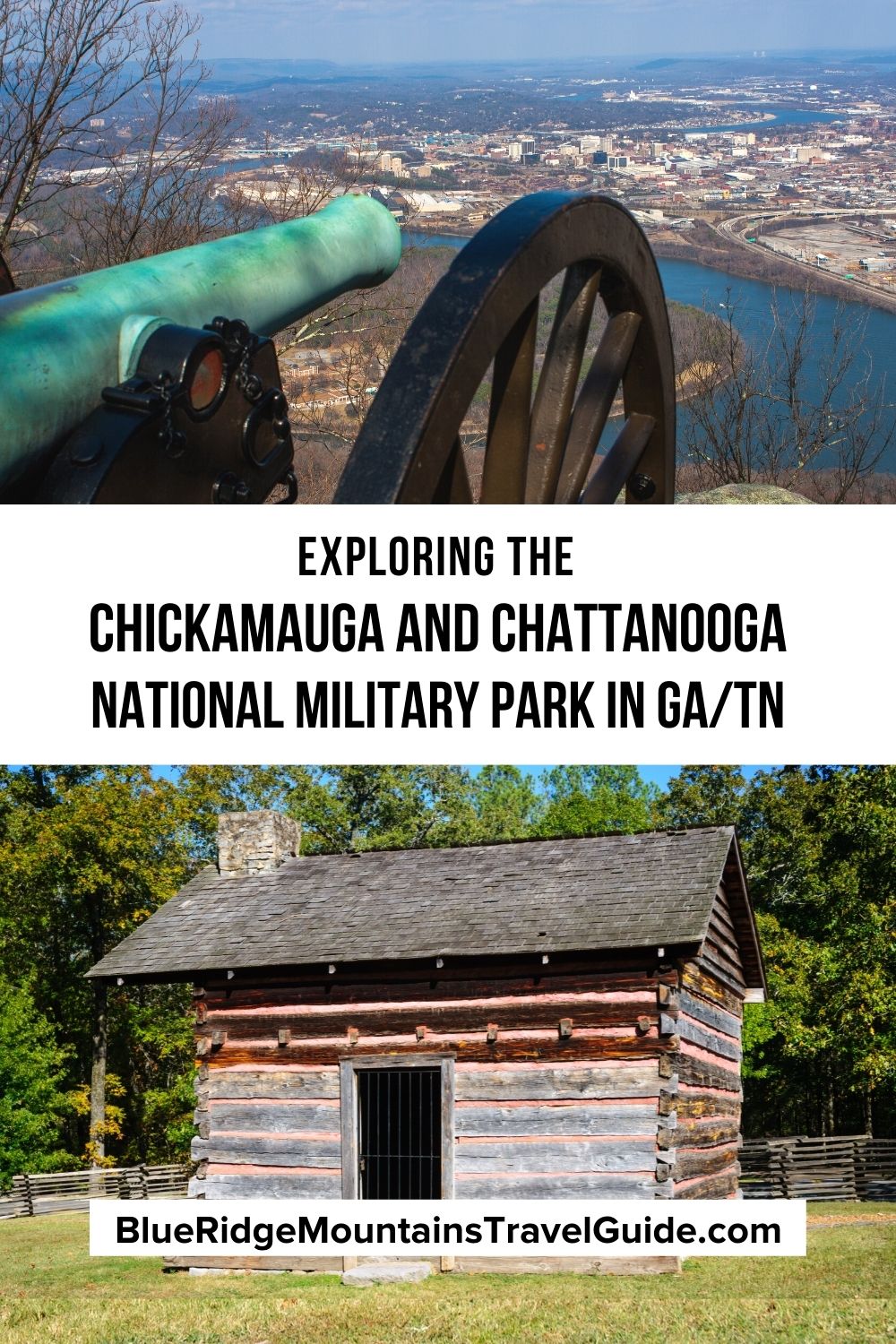The battles at Chickamauga and Chattanooga were a major turning point in the Civil War.
Winning the Battle of Chattanooga in late November of 1863 created a path for the Union Army to take Atlanta, which had a direct effect on the end of the war.
Today, these historic battlefields are preserved at the Chickamauga and Chattanooga National Military Park.
The small town of Lookout Mountain (which straddles the line dividing the state of Georgia and Tennessee) draws crowds from all over the world.
The National Military Park offers some of the most beautiful views of the area, making it a popular Lookout Mountain attraction for tourists and locals alike.
The Chickamauga Military Park includes locations at the Chickamauga Battlefield, Missionary Ridge, Lookout Mountain Battlefield, Point Park, and Moccasin Bend.
The Moccasin Bend Archaeological District, which is also visible from Lookout Mountain, wasn’t added until 2003.
The small park area continues to grow every year, and will hopefully add more visitor services in the future.
READ MORE: The 15 Best Things to Do in Lookout Mountain in GA/TN
Chickamauga and Chattanooga National Military Park Guide
- History of the Chickamauga & Chattanooga Military Park
- Chickamauga Battlefield
- Missionary Ridge
- Lookout Mountain Battlefield
- Point Park
- Moccasin Bend

History of the Chickamauga & Chattanooga Military Park
The Chickamauga & Chattanooga Military Park– the first park of its kind in the USA– was authorized in 1890.
With over 9,000 acres of battlefields, forests, monuments, and historic landmarks, the park is the perfect destination for Civil War history buffs.
In the early 1860s, Confederate and Union forces met in Chattanooga TN, each fighting for control of the “Gateway to the Deep South.” Some 100,000 men fought in Chickamauga and Chattanooga, resulting in more than 30,000 casualties.
On June 7, 1862, the Federal troops began their first attack on Chattanooga, Tennessee.
The Confederate forces were unorganized, allowing General James Newly to attack and send a warning to the Southern soldiers that the Union forces were ready to take the Tennessee mountain town.
But it wasn’t until August 16, 1863, that the Union finally took control of the city.
The Union Army slyly tricked Confederate General Braxton Bragg, leading him to believe that their attack would come from the North.
General Newly sent a small force of troops North to initiate the deception. Among other tricks, they sent chunks of chopped wood down stream, leading Bragg to believe that they were building rafts to cross the Tennessee River.
Meanwhile, Union troops were waiting to the south and west of the city, where they had quickly built pontoon bridges to cross. Then they began a shelling attack that would eventually drive Bragg further south into North Georgia.
READ MORE: How Gold Mining in Georgia Led to Land Lotteries & the Trail of Tears

The Battle of Chickamauga
The Chickamauga and Chattanooga Park does an exceptional job of preserving the history of one of the most significant Union wins in the Civil War.
The Battle of Chickamauga was the first step to claiming Atlanta. The battle was fought between Missionary Ridge and Chickamauga Creek, in what is now the town of Fort Oglethorpe GA.
On September 18, 1863, Confederate forces made an attempt to reclaim Chattanooga. Led by Union Major General William Rosecrans, the Army of the Cumberland marched to Chattanooga after their success in Tullahoma TN.
Gathering all the Union forces from Tennessee and Georgia, they successfully pushed the Confederate army out of Chattanooga.
General Braxton Bragg, leading the Confederate Army of Tennessee, met the federal forces at Alexander’s Bridge and Reed’s Bridge, hoping to reclaim the “Gateway to the South.”
Fighting lasted well into the night, but really began to escalate on the morning of September 19th. Rosecrans, who had been misinformed by his men about a supposed gap in their front line, nearly cost the Union their victory.
When Rosecrans moved his forces down, it created a real gap in the line. Confederate Lieutenant General James Longstreet used the confusion to make a move, pushing one-third of the Union Army from the battlefield.
With Rosecrans gone, the Confederate soldiers (which included the Army of Northern Virginia) were able to push their line back to Horseshoe Ridge (a.k.a. Snodgrass Hill), where they were met by Union Major General George H. Thomas.
Thomas and his men held their line until nightfall, earning him the nickname of “The Rock of Chickamauga.” Although the Confederate Army left victorious, Chickamauga GA proved merely a stop on the Union’s way to claiming Atlanta.
Rosecrans was eventually able to drive Bragg out of North Georgia, creating space for Major General Sherman’s attack on Atlanta, which effectively ended the Civil War.
Over 60,000 men fought in the battle, and more than 100,000 soldiers were stationed in Chattanooga and North Georgia that fall.
There were at least 15,000 casualties on each side, making the Chickamauga battlefield the Civil War’s second bloodiest battlefield after the Battle of Gettysburg.
Today, the Chickamauga National Military Park offers an array of hiking trails, monuments, plaques, and the Chickamauga Battlefield Visitor Center & Museum for visitors to explore.
READ MORE: The 15 Best Historic Sites in Georgia

Things To Do in Chickamauga & Chattanooga National Military Park
The Chickamauga Military Park offers a variety of great hiking trails that take you all over the Chickamauga battle site.
Visitors can explore Snodgrass Hill from Vittetoe Road, or take the 2.8-mile loop trail at the Colquitt Monument and Helm Monument to learn more about the battle.
Online reviews of the Colquitt Monument and Helm Monument trail are not great, with many mentioning mud and a lack of trail markers.
We recommend you avoid visiting after rainfall, expect a creek crossing or two, and check out any trail markers for a QR code that takes you to a park map.
The National park‘s trails branch off often, and have multiple entry points from the main roads. But all offer a great way to explore the park’s monuments and statues. Small pull-off lots are also available for those looking to drive through.
The most visited area on the Chattanooga side of the National Military Park is Point Park. Located at the top of the mountain, Point Park has a short, accessible loop that offers staggering views of the city.
Skip the paid parking along the street and park behind the visitor’s center. This National Park Service parking lot is free to visitors. Entry into the park is $10, but passes are good for 7 days if you hang on to your receipt.
One of the most popular hiking trails in Chattanooga is the hike to Sunset Rock. The lookout point is accessible from Ochs Gateway and West Brow Rd, but the most popular entry point is from Point Park.
The hike from Point Park starts from the Ochs Museum & Observatory. This trail isn’t ADA-accessible, as it starts off with a few short sets of stairs, leading to a larger set of steep metal stairs.
From there, the trail branches off in different directions, which are popular with local trail runners and climbers. Sunset Rock is to the left, with about 1 mile of hiking and a short climb up to the top.
READ MORE: The 52 Best Georgia Hiking Trails for the 52 Hikes Challenge

10 Battle of Chickamauga Facts
1. The Battle of Chickamauga was the first of the battles of the Civil War in Georgia.
2. Chattanooga was a significant city to the Union because it had railroad lines running to Knoxville, Nashville, and Atlanta. This made it easier for the armies to access supplies during the war.
3. General Bragg needed reinforcements from Mississippi and Virginia in order to strike back against General Rosecrans. This was the first large-scale Confederate movement from one theater of the war to another.
4. Chickamauga is often rumored to be a Cherokee word meaning “bloody river,” or “river of death.” But it’s derived from a Shawnee word that means “dwelling by the water,” which was later adopted to refer to the Cherokee people living along Chickamauga Creek.
5. The distraction Rosecrans created in Chattanooga, sending pieces of wood downstream, was executed by the Lightning Brigade. It was the first mounted infantry brigade used by the U.S. Army in the Civil War.
6. Union Army engineers built the bridges for 4 different crossings of the Tennessee River very quickly. It took just 1 week for the entire army, including the Army of the Cumberland, to get across.
7. In his telegraph to another Union general, Rosecrans wrote, “Chattanooga is ours without a struggle, and East Tennessee is free.”
8. Rosecrans believed that Bragg had fled South after the Union claimed Chattanooga. Bragg had Confederate soldiers pose as deserters in order to reinforce the ruse.
9. Bragg sent soldiers to attack divisions of the Union Army that had left Chattanooga. But Bragg’s men defied his orders, delaying the attack because they didn’t agree with the operation.
10. Critics of General Bragg’s maneuvers say that he was obstinate, unable to rethink his plans, and well-known for missing strategic opportunities to attack the Union forces. –by Amy Lewis




